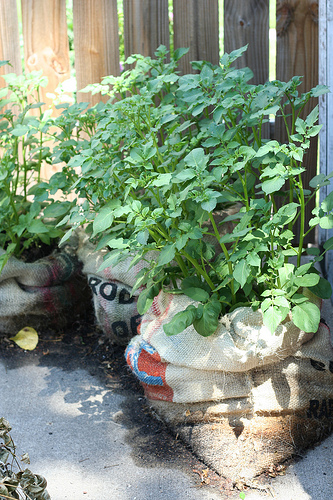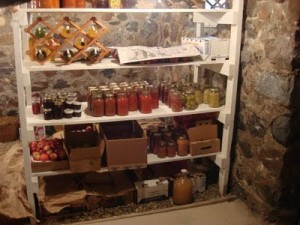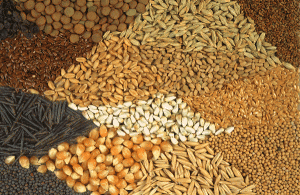The 2014 gardeners’ porn magazine has arrived. Let the lusting and drooling begin…

What the heck are microgreens? They’re like mini greens, only smaller.
If you’re looking to add some new, nutritious tastes to your summer cooking you can go to the farmers market and buy microgreens. Or, you can quickly and easily grow them yourself in a minimum of space. A recent article by Matthew Kadey in Alive magazine has me salivating to add them to my summer salads and gluten-free wraps to add crisp new flavours as well as lots of great nutrition.
“If you’ve got a windowsill, you’ve got the space and light necessary to grow a variety of nutrient-rich micro greens. For those who haven’t heard the term, micro greens are plants and lettuces that are harvested to eat when they reach about one to two inches high—well before they’ve grown to full size.
Unlike sprouts where you eat the seed, root, stem, and underdeveloped leaves, with micro greens the stem is cut and you nosh on the baby leafy foliage that is bursting with tastes ranging from peppery to mild and subtle. Undeniably, they have become all the rage as a fanciful garnish and flavour accent at finer restaurants. Plus, health experts are increasingly trumpeting these plant shoots for their cocktail of disease-fighting compounds. Here’s how and why you should rear your own.” Read the full article
Ever wondered what you, personally, could do to feel more empowered? Or considered doing something powerful in response to climate change and all the other things that are making our children and our futures less secure?
As they say, “Making a difference starts at home” and it starts with what we put into our bodies.
Learn how easy it can be to assert more control over the food that we eat by growing it ourselves. Don’t let limited space, insufficient knowledge, or a tight budget deter you. You’ll see how to integrate affordable, easy and compact growing systems and approaches into your life no matter where you live. Take things one step further and you may soon find yourself selling or gifting your surpluses to the people around you. Wallah! – Community.
Saturday, October 22nd, 2011
6:15pm – 9:45pm
The HiVE Vancouver
128 West Hastings (half a block east of Cambie Street)
Enjoy music, beer, pizza and fabulous company.
Contribute what you can: Recommended $12 – $20
 ‘Tis the season to begin considering your garden, and potatoes are a good place to start. If you missed the recent workshop on growing potatoes in a sack (complete with said sack and potatoes) it’s not to late to get the skinny on how what conditions create the best results.
‘Tis the season to begin considering your garden, and potatoes are a good place to start. If you missed the recent workshop on growing potatoes in a sack (complete with said sack and potatoes) it’s not to late to get the skinny on how what conditions create the best results.
This month’s West Coast Seeds newsletter offers their top recommendations:
“Aside from hilling up, here are our top five tips for tip top potatoes:
 This weekend join The World In A Garden for their second annual Potato Fusion workshop.
This weekend join The World In A Garden for their second annual Potato Fusion workshop.
Reusing burlap coffee sacs, participants will plant highly nutritious organic potatoes at the bottom and lettuce plants at the top- it’s a potato fusion! All plants and materials will be provided so just BYOG (bring your own gloves) and go home with a sac of potatoes (and lettuce).
Sunday, March 20th, 2011
11:00 am or 1:00 pm (2 sessions)
West 57th & East Boulevard
$20 per person
*Includes potato fusion kit
Proceeds will be donated to The World In A Garden and Project Somos Children’s Village, Guatemala for projects teaching children gardening skills to last a lifetime.
To reserve your spot, contact Alicia Baddorf via phone 604.527.5151 ext. 213 or by e-mail at abaddorf@jfsa.ca.
The World In A Garden is a multicultural urban agriculture project that educates the community on the nutritional, cultural, environmental and social benefits of the local food system.
 Expand your garden to the indoors! The World In A Garden is kicking off the 2011 growing season by exploring the techniques and benefits of growing your plants inside.
Expand your garden to the indoors! The World In A Garden is kicking off the 2011 growing season by exploring the techniques and benefits of growing your plants inside.
Ilana Labow from Fresh Roots Urban Farm will be guest speaker. Don’t miss out on expert advice and a fun time! Participants will take home a gardening calendar, an Organic Gardening magazine, a free packet of West Coast Seeds and a potted plant.
Sunday, March 6th, 2011
11:00 am – 1:00 pm
West 57th & East Boulevard
$20 per person
*Snacks and coffee provided*
All proceeds to The World in a Garden.
To register contact Alicia Baddorf at 604.257.5151 ext. 213 or via email abaddorf@jfsa.ca
The World In A Garden is a multicultural urban agriculture project that educates the community on the nutritional, cultural, environmental and social benefits of the local food system. Their mandate is to increase access to highly nutritious, fresh and organic food in a way that maintains dignity, builds community and celebrates diversity. The World In A Garden educates the community and youth on the importance of the local food system through youth education programs, volunteer days, workshops, community events and market sales.
.
On Thursday January 27th, Will Allen, the professional basketball player turned food security and urban farming leader of Growing Power, will be paying a visit to Vancouver’s very own SOLEfood Farm.
SOLEfood Farm features 150 raised garden beds tended by trained seasonal workers from the Vancouver Downtown Eastside. The Enterprising Non Profit (ENP) established in 2009 by United We Can alongside farmer and author Michael Ableman has benefited from widespread community support and is now earning international recognition from a man whose three-acre Growing Power urban farm in Milwaukee is a world-class model for intensive urban agriculture and community food systems.
Michael Ableman and Seann Dory, SOLEfood Farm Project Manager, will be welcoming Will Allen to the farm for a pivotal meeting of minds in the Astoria Hotel parking lot which, thanks to SOLEfood, now embodies the revival of fruitful urban green space.
Thursday, January 27th, 2011
10:00 am
SOLEfood Farm
399 Hawks Avenue, Vancouver BC
Will Allen will also be speaking at the Bruce and Lis Welch Community Dialogue on Thursday evening. This evening lecture is free, however pre-registration is required.
Thursday, January 27th, 2011
7:00 – 9:00 pm
Croatian Cultural Centre
3250 Commercial Drive (map)
 For successful gardeners, the question of how to store one’s harvest always comes up eventually. (For the likes of the rather improbable gardener such as myself, it is somewhat less of an issue.)
For successful gardeners, the question of how to store one’s harvest always comes up eventually. (For the likes of the rather improbable gardener such as myself, it is somewhat less of an issue.)
Most climates aren’t blessed with a year round growing season so one must make hay while the sun shines, then save for a rainy day. In this climate, literally. That means finding ways to preserve your bounty for the winter months.
This past year I’ve noticed a huge resurgence of interest in canning, pickling and other time honoured methods of “putting up” the harvest. So it’s no surprise that folks are looking back a generation or two for additional traditional solutions, calling up distant memories of how parents and grandparents fed themselves between growing seasons.
 Enter, the root cellar. Cheap to make and maintain, naturally cool, highly effective, the perfect DIY project (no electrical wiring required).
Enter, the root cellar. Cheap to make and maintain, naturally cool, highly effective, the perfect DIY project (no electrical wiring required).
Enter, a new generation of children sent down to dark, damp, spider-infested rooms to bring up the ingredients for dinner. Not to worry, we survived the trauma, so will they.
How To Do It Yourself
Want to be all trendy and get your own root cellar, but you’re not sure where to start? Here is an assortment of resources, in no particular order (but I saved the best for last):
 Until I became aware that quality seeds matter, I thought you bought seeds wherever from whomever. I mean, as long as it grows, right? (Well sure, until you start thinking about the downsides to using GMO seeds.)
Until I became aware that quality seeds matter, I thought you bought seeds wherever from whomever. I mean, as long as it grows, right? (Well sure, until you start thinking about the downsides to using GMO seeds.)
Then as I started gardening and having success with some seeds and not others, it became apparent why it’s also beneficial to plant local seed varieties, cultivated to thrive in specific regional climates.
You can learn how to save seeds yourself — just remember, it’s important to store seeds properly — but if that’s too much work or it’s too late in the season, it’s good to know where you can get quality seeds.
In addition to those listed in an earlier post, Sourcing Seeds Locally, Cyber-Help for Organic Farmers also offers a list of certified organic seed suppliers in Canada.
Remember, some plants are more particular about the environment they’ll grow in, so it may be beneficial to choose from a source whose seeds come from your own or a similar climate region, too.